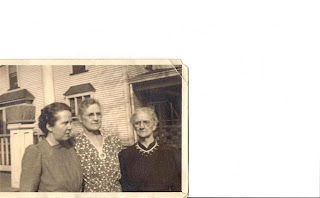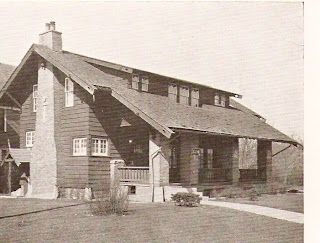




For decades it sat hidden behind a forest of trees neglected and abandoned. For years I admired the beautiful wreck as it stood against the elements. I often wondered about the mysterious property with the giant gingko tree towering over Lowell Avenue. I looked for any signs of life as if the Charles Dickens' character Miss Havisham might appear in the window in her wedding dress at any moment. I photographed the place often and imagined what it might have been like when the Davidson family dwelled here. Then a miracle happened. A wonderful young couple purchased the house and began to bring the home back from the brink. By 2011, they had restored the splendor of the place.
While many people have lived in the house, Robert F. and Mary Galvin Davidson and their children lived in the home from the early twentieth century through the 1930s. Mr. Davidson was a prominent attorney and made his money defending insurance, railway, and telegraph companies. He met his wife while a student at Butler University. Mary Galvin came from a prominent Irvington family who dwelled along Downey Avenue. They married on April 18, 1900. They would have four children although their only son Robert Jr. died at age five on November 26, 1917.
Mrs. Davidson was an active club woman and she frequently hosted meetings at her lovely home. She was very much involved in her children's lives. In 1921, she took all three of her daughters, Margaret Layne (age 19), Katherine K. (age 17), and Mary Elizabeth (age 12) on a tour of Europe. They departed New York City on October 1 and sailed on the Rochambeau for Hauvre, France. For several weeks they traversed the French countryside. Then they departed for Belgium, Italy, Switzerland, and Great Britain. They would return to Europe again in 1927 and follow a similar path. Mr. Davidson stayed home to earn money.
While the ladies of the house vacationed in Europe, Mr. Davidson volunteered their home to serve as a temporary dwelling for Dr. Robert J. Aley, the new President of Butler University. Mr. Davidson served on Butler's Board of Directors through part of the 1920s. It also appears that Butler students rented rooms as well.
The family frequently summered in the Adirondacks. Their oldest daughter Margaret studied voice under renown teacher Oscar Seagle at his summer school in Northover Camp at Bound Brook, New York. Mr. Davidson frequently joined the family at the summer cottage, but he did not stay for the entire summer.
The Davidsons, like many Irvington families, are now gone. Each house in the neighborhood tells a different story. A once beautiful home, falling into ruin, and now beautiful again, is testimony to the continuum of life in this community. The family who saved this house will have their own stories to add. Perhaps someday, one hundred years from today, someone will walk by this house and wonder who lived here?
About the images: The historic photo was taken during the winter of 1920. Note the sleeping porch had not yet been added. The photos that show the house in a neglected state were taken during the winter of 2005 and the spring of 2006. The newest photos were shot during the early spring of 2011.













